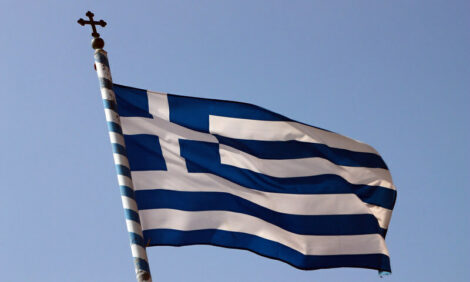



Deathly Drought In Africa's Horn
AFRICA - A drought in the Horn of Africa, triggered by the same La Niña episode that caused massive flooding in Australia last year, is plunging millions of pastoralists closer to food insecurity.Parts of Kenya, Ethiopia, Somalia and eastern Uganda are most affected. The UN World Food Programme (WFP) estimates that 8.4 million people are in need of food aid in the region, according to spokesman David Orr. Thousands of livestock have already died in Kenya and Ethiopia from animal diseases associated with the drought. The severity this year will depend on the rainy season between March and May.
Droughts are not new to the region. A massive one between 2008 and 2009 left 23 million people hungry and millions of livestock dead. And before that, droughts have taught pastoralists to become nomads, moving with their hardy animals in search of better grazing land.
But recent droughts are affecting a population that is increasingly vulnerable to climate threats. Reduction in livestock holdings due to more frequent droughts, coupled with a population that is growing at 2.5 per cent per year over the past 40 years, has decreased the amount of protein and milk available to the average family. There is greater competition for land from agriculture and urbanization. And global climate change studies have suggested the region will become drier in the future.
In pastoralist areas where cow and camel herders prize their animals above other forms of wealth, livestock deaths can doom livelihoods.
Unlike more instantaneous natural disasters such as earthquakes, drought progresses slowly like a drumbeat. There is an apex, usually around the ninth month when the numbers of cattle dying rises drastically. The numbers depend on how poor the rainfall is, and meteorologists have so far predicted below-average rainfall for 2011 in eastern parts of the Horn.
Predictions of the current drought depend on ocean temperatures. A La Niña episode, caused by cooling ocean surface temperatures, began in the central Pacific Ocean in July 2010. Temperatures lowered by 1.5 to 1.6 degrees Celsius, changing ocean and atmospheric circulation patterns.
In historical terms, this episode has been among the strongest in a century, according to the World Meteorological Agency. The system unleashed massive flooding in Australia and Southeast Asia. In East Africa, it caused a dry spell between October and December 2010. It was the driest short rain season in 30 years.
However, one failed season does not translate to a major threat. The problem arises if there is a second consecutive season of poor rains during the long rain season of March to May. The season is critical for the Horn, providing from 40 to 80 percent of the annual rainfall.
Other factors include the price of food in local markets, the price of animal feed and water table decrease over subsequent droughts. For a pastoralist, livestock is life and selling or killing a precious asset will be the last recourse.
Current predictions from the Famine Early Warning Systems Network (FEWS NET East Africa) are that rains will be below normal in the eastern parts of the Horn. This may not be enough to replenish pastures and avoid livestock deaths.
The Disaster Risk Management Agriculture Task Force in Ethiopia has recommended de-stocking the cattle before the drought worsens to provide cash for pastoralists. The money could be used for food and to purchase feed for important breeding lines of cattle. It is estimated that culling 40,000 drought-weakened cattle would cost about $2 million.
TheCattleSite News Desk


